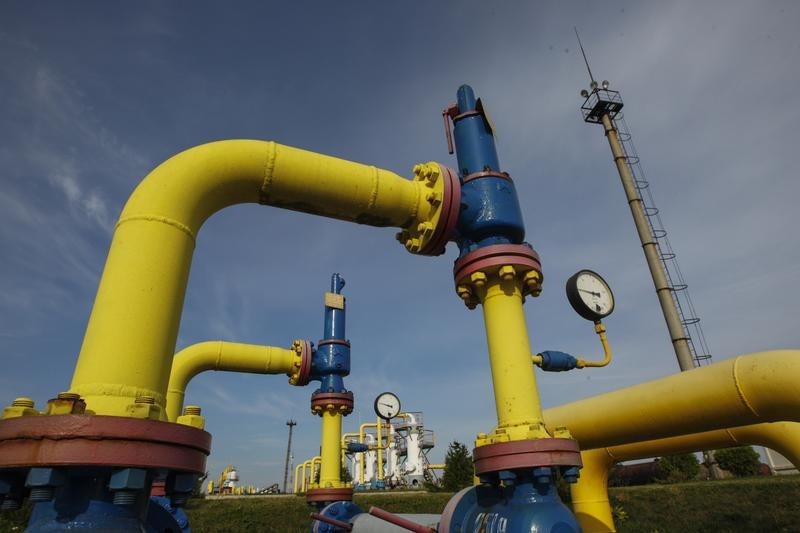(The opinions expressed here are those of the author, a columnist for Reuters.)
* Graphic of China LNG imports vs. Asia spot price:
* http://reut.rs/2yZ7utQ
By Clyde Russell
LAUNCESTON, Australia, Oct 5 (Reuters) - The spot price of liquefied natural gas (LNG) in Asia is enjoying its traditional surge ahead of peak winter demand, and the near 40 percent rally over the past six weeks probably has further to go.
While exporters of the super-chilled fuel will no doubt be trying to maximise the number of spot cargoes they offer, of more interest to them may be how steep the post-winter drop is likely to be.
Much of the current boost to prices is due to stronger-than-expected Chinese demand, as Beijing expands use of the cleaner-burning fuel in place of coal for winter heating.
The government is spending huge amounts to build out its natural gas infrastructure to change some 4 million homes from coal to natural gas heating, with consultants Wood Mackenzie estimating that China's natural gas demand could be boosted by 10 billion cubic metres this winter, equivalent to about 5 percent of last year's total consumption. LNG imports for the first eight months of the year are up a massive 44.3 percent to 22.1 million tonnes, according to customs data, increasing every month since May. O/CHINA7
China still ranks third behind Japan and South Korea in global LNG imports, although it is the country with the fastest growth, and the most potential for steadily rising demand.
Spot LNG prices LNG-AS have responded to the increased demand from China, jumping 39 percent to end at $8.40 per million British thermal units (mmBtu) for the week to Sept. 29, up from a recent low of $6.05 for the week ended Aug. 25.
By way of comparison, the spot priced surged 86 percent between September last year and the winter peak of $9.75 per mmBtu, reached in the first week of January this year.
There was no winter-led spike in 2015-16 as the market grappled with oversupply and a mild winter, but in 2014-15 the price rose by 43 percent in the run-up to the cold season peak.
History suggests this year's pre-winter rally may still have further to go, but the problem for LNG is that it may end up being a victim of its own success.
One of the costs for Chinese authorities is that in expanding the natural gas network they are likely to have to spend more money subsidising the fuel.
While LNG is well below its spot peak of $20.50 per mmBtu, it is also still more expensive than coal, even though the dirtier fuel has also enjoyed strong gains in recent months, with the benchmark weekly price at Australia's Newcastle port GCLNWCWIDX jumping 41 percent between mid-May and late August.
If LNG costs continue to rise, it may cause China to slow down the rapid deployment of natural gas infrastructure, even though Beijing has made combating air pollution a top priority.
It may end up being simpler to force industries that are heavy coal users to curb their output during the winter months, a quicker and cheaper fix than switching to natural gas.
Though the rally in spot Asian LNG prices has been largely demand-driven, it's also worth looking at the supply side.
SUPPLY TIGHTNESS TO EASE
While the United States is not a major player in Asia, its exports were crimped in recent weeks by Hurricane Harvey, which struck along the Gulf of Mexico coast, where the only operating U.S. LNG export terminal is located.
U.S. shipments of LNG were 0.92 million tonnes in August, weakest since March, according to vessel-tracking and port data compiled by Thomson Reuters Supply Chain and Commodity Forecasts.
No cargoes left the U.S. between Aug. 24 and Sept. 8, according to the data, although September shipments still managed to reach 1.12 million tonnes, the second best month so far this year.
The loss of a small number of U.S. cargoes may have contributed to a tightening of supply, but it's worth noting that U.S. exports should ramp up in coming months, as a second export terminal starts production.
Dominion Energy's D.N Cove Point LNG terminal in the state of Maryland is in its commissioning phase and may ramp up to its 5.9 million tonnes a year capacity in 2018, adding to the near 20 million tonnes of annual capacity from the Cheniere Energy LNG.A facility at Sabine Pass in the Gulf of Mexico.
Another three U.S. LNG export plants are slated to start later in 2018, with much of their production looking to find buyers in Asia. Australia, Chevron (NYSE:CVX)'s CVX.N 8.9 million tonnes a year Wheatstone project in also in its commissioning phase, while the 3.6 million tonne capacity Prelude floating LNG facility, operated by Shell RDSa.L , and the 8.9 million tonne Ichthys venture by Japan's Inpex are due to start production next year.
This means that while LNG may look somewhat tight for the upcoming winter, it appears likely to be well-supplied in 2018.
Much will again depend on China. If it can repeat the growth rate of LNG imports seen this year in 2018, this will help clear any surplus cargoes.
But if spot LNG prices keep rising, China is likely to curb purchases and rely on existing, long-term contracts.
<^^^^^^^^^^^^^^^^^^^^^^^^^^^^^^^^^^^^^^^^^^^^^^^^^^^^^^^^^^^ Graphic of China LNG imports vs. Asia spot price:
http://reut.rs/2yZ7utQ
^^^^^^^^^^^^^^^^^^^^^^^^^^^^^^^^^^^^^^^^^^^^^^^^^^^^^^^^^^^> (Editing by Tom Hogue)
